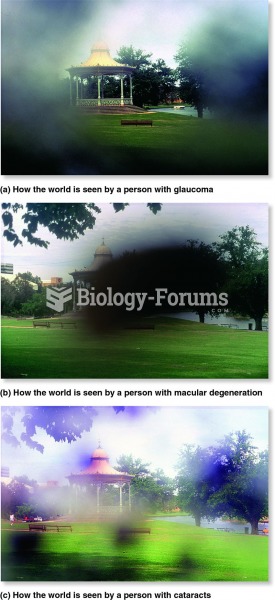|
|
|
The people with the highest levels of LDL are Mexican American males and non-Hispanic black females.
More than 20 million Americans cite use of marijuana within the past 30 days, according to the National Survey on Drug Use and Health (NSDUH). More than 8 million admit to using it almost every day.
The heart is located in the center of the chest, with part of it tipped slightly so that it taps against the left side of the chest.
Inotropic therapy does not have a role in the treatment of most heart failure patients. These drugs can make patients feel and function better but usually do not lengthen the predicted length of their lives.
Interferon was scarce and expensive until 1980, when the interferon gene was inserted into bacteria using recombinant DNA technology, allowing for mass cultivation and purification from bacterial cultures.
 The visual field as seen by a person with (a) glaucoma, (b) macular degeneration, and (c) cataracts.
The visual field as seen by a person with (a) glaucoma, (b) macular degeneration, and (c) cataracts.
 Frequent dining on fast food, which tends to be higher in fat and carbohydrates, may be convenient ...
Frequent dining on fast food, which tends to be higher in fat and carbohydrates, may be convenient ...





